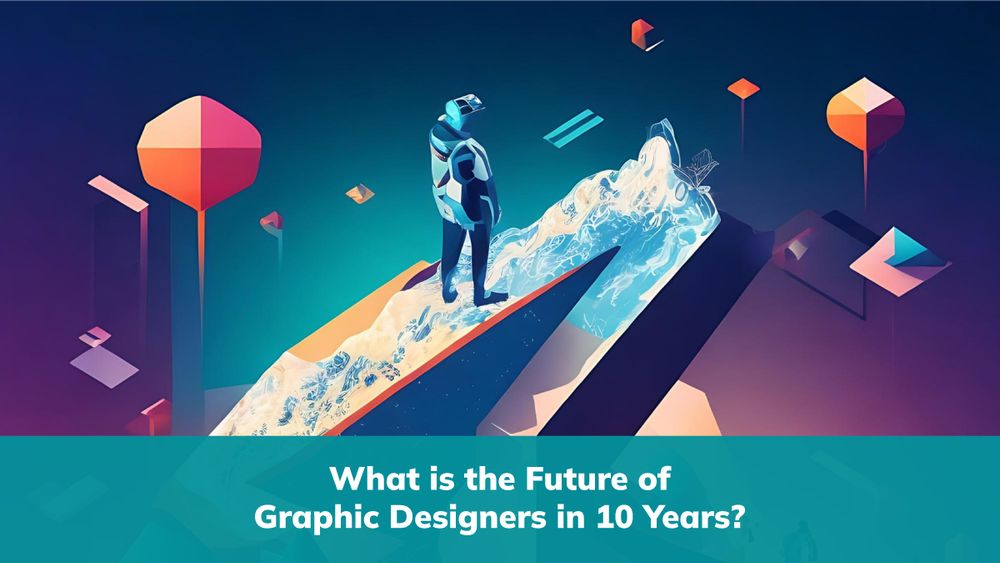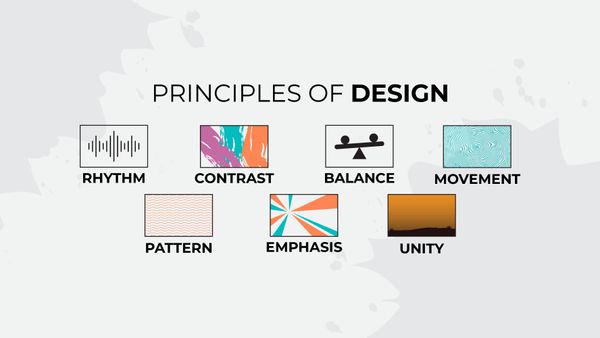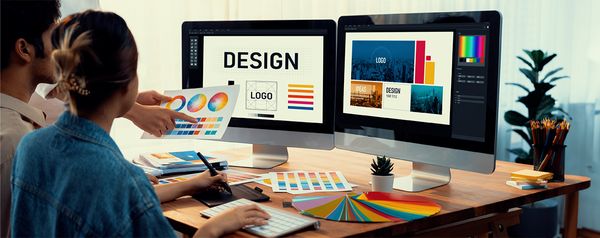What is the Future of Graphic Designers in 10 Years?
The graphic design industry has always been dynamic, constantly evolving with technological advancements and changing design trends. As we look ahead to the next 10 years, the future of graphic designers appears to be filled with exciting possibilities.
From immersive experiences to augmented reality and artificial intelligence to sustainable design, this blog explores the emerging trends and technologies that will shape the role of graphic designers and the industry.
1: Increased Demand for Digital Design
In the next decade, the demand for digital design is expected to soar even higher. In fact, the demand to learn graphic design will also rise up! With the continuous growth of online platforms, social media, mobile applications, and digital marketing, businesses will increasingly rely on graphic designers to create visually captivating and user-friendly digital experiences. Designers must master responsive design, interactive interfaces, and optimised content for various devices and screen sizes.
2: Integration of Augmented Reality (AR) and Virtual Reality (VR)
AR and VR technologies are rapidly advancing, and their integration into modern graphic design styles will revolutionise the way we perceive and interact with visual content. Graphic designers will play a vital role in creating immersive and interactive experiences, whether designing AR filters, creating VR environments, or developing virtual product demonstrations. Blending digital and physical worlds seamlessly will become a sought-after skill for graphic designers.
3: Embracing Artificial Intelligence (AI)
AI has the potential to automate repetitive tasks, freeing up designers to focus on more strategic and creative aspects of their work. AI-powered tools can assist in generating modern graphic design styles and variations, optimising layouts, and even suggesting color schemes based on data analysis. The graphic designers should adept and learn how to collaborate with the AI tools to enhance their efficiency and creativity.
4: Sustainable Design and Ethical Practices
As society becomes more environmentally conscious, there will be an increased demand for sustainable design solutions. Graphic designers must incorporate eco-friendly principles into their work, considering factors like recyclability, reduced carbon footprint, and ethical sourcing of materials. Designers will also play a crucial role in promoting social responsibility, inclusivity, and diversity through visual communication.
5: Personalisation and User-Centric Design
Personalised and user-centric design will be paramount in the future. With the abundance of data and advancements in user tracking, graphic designers will have access to valuable insights about their target audience. They will be responsible for creating tailored visual experiences that resonate with individual users, whether it's through customized interfaces, personalised marketing materials, or adaptive user experiences.
6: Collaborative Design and Remote Work
The rise of remote work and digital collaboration tools will continue transforming the graphic design industry. Designers will collaborate with clients and colleagues worldwide, requiring effective communication and project management skills. Collaborating seamlessly across different time zones and cultures will be essential for graphic designers in the coming years.
7: Budding Designers Need to Continuous Learn & Develop Adaptability
To thrive in the future, graphic designers must embrace lifelong learning and adapt to new technologies and design trends. The industry will evolve rapidly, and staying updated with emerging tools, software, and techniques will be crucial. Designers must engage in professional development, attend workshops, and participate in online communities to stay ahead of the curve.
8: Data Visualisation and Infographics
With the exponential growth of data, there will be an increasing demand for graphic designers who can transform complex information into visually engaging and easily understandable formats. Data visualisation and infographics will play a vital role in conveying information effectively, making it visually appealing and accessible to a wide audience.
9: Develop Cross-Disciplinary Skills
Graphic designers of the future will benefit from having cross-disciplinary skills. Collaboration with professionals from fields like UX/UI design, motion graphics, coding, and content creation will become more common. The ability to work seamlessly across different disciplines and integrate various design elements will be highly valued.
10: Adopt Mobile-First Design
As mobile devices continue to dominate digital consumption, graphic designers will need to prioritise mobile-first design principles. Creating user-friendly interfaces, optimising designs for smaller screens, and ensuring a seamless mobile experience will be essential skills for graphic designers.
11: Motion Graphics and Video Content
Video content consumption is on the rise, and graphic designers will need to adapt to this trend. Motion graphics, animation, and video editing skills will be in high demand as designers create engaging visual content for social media platforms, websites, and multimedia presentations.
12: Voice User Interface (VUI) Design
With the growing popularity of voice assistants and smart devices, designers will need to consider VUI design principles. Creating visually appealing voice-driven interfaces and designing intuitive voice interactions will be essential skills for graphic designers in the future.
13: Global Design and Cultural Sensitivity
As the world becomes more interconnected, graphic designers will need to have a global perspective and cultural sensitivity. Designers will be tasked with creating visual content that resonates with diverse audiences and reflects different cultural contexts.
14: Emphasis on Branding and Brand Identity
In an increasingly competitive market, businesses will rely on graphic designers to create strong brand identities and memorable visual identities. Designers will play a vital role in shaping brand aesthetics, developing brand guidelines, and ensuring consistent branding across various platforms and mediums.
15: Entrepreneurship and Freelancing
With the rise of the gig economy and remote work, many graphic designers will choose to work as freelancers or start their own design businesses. Building entrepreneurial skills, including marketing, client management, and financial management, will be crucial for designers who want to succeed in this landscape.
The future of graphic designers promises a dynamic and innovative industry driven by technology, user-centric design, and sustainability. As digital platforms expand, augmented reality becomes mainstream, and artificial intelligence advances, graphic designers will find themselves at the forefront of creating captivating visual experiences.
By embracing the graphic design courses you’ll be able to get hands-on expertise to contribute to the society in a much creative way. You need to go hand-in-hand with emerging technologies, focusing on sustainable practices, and honing their creativity, graphic designers can unlock new opportunities, collaborate across borders, and shape the visual landscape of the future. It is an exciting time to be a graphic designer, and those who adapt and embrace change will thrive in the dynamic decade ahead.




